Let’s Talk Sh*t
What if one of the biggest climate and health solutions on Earth is something we have all been sitting on for centuries? The toilet.

✔️ This action has been verified.
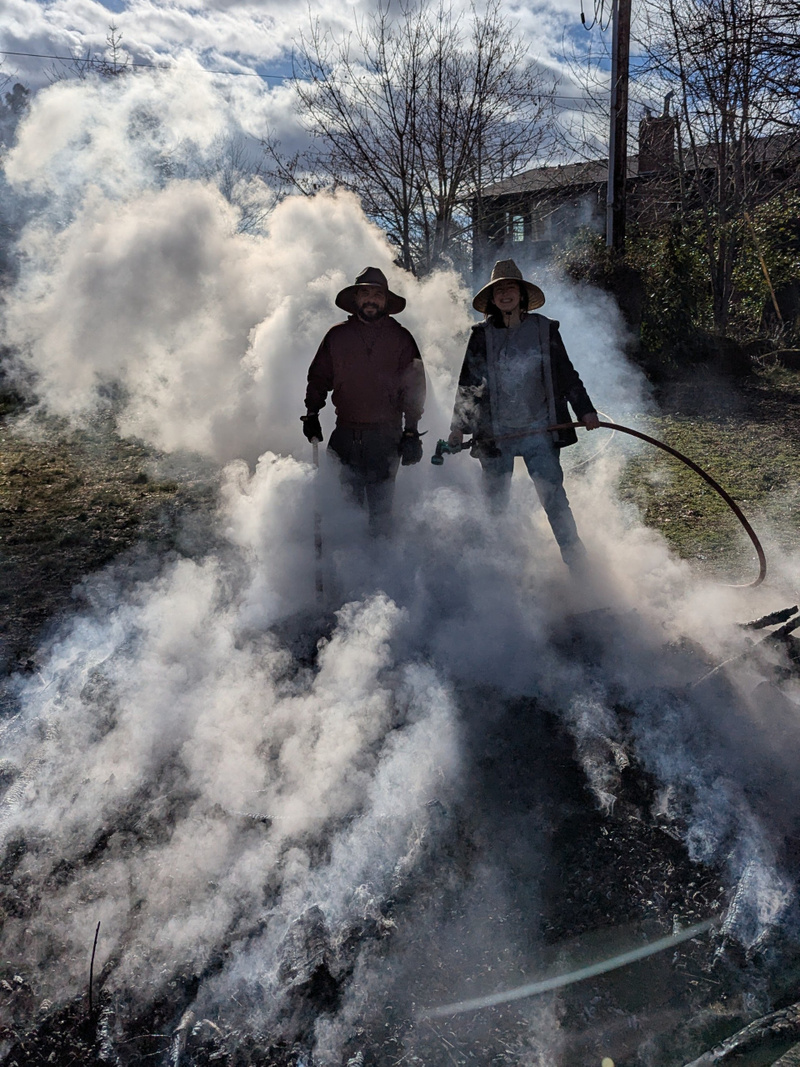

Over the past few months at Maybloom, we completed three biochar burns using wood collected during our fall, winter, and early spring pruning. In total, we produced around 70 gallons of homemade biochar — all with simple tools, no fancy kilns, and a lot of respect for the elements.
Biochar, for those unfamiliar, is a form of charcoal made through a process called pyrolysis — burning organic material in a way that limits oxygen, converting it into stable carbon that can stay in the soil for hundreds to thousands of years. It enriches soil, improves water retention, and feeds microbial life — all while sequestering carbon that would otherwise return to the atmosphere.
But for us, these burns are about more than the science. They’ve become a kind of ritual — a seasonal collaboration between fire, wood, and our own rhythms. Each burn marks the culmination of weeks or even months of preparation.
We start by selecting a safe, open spot far enough from trees and buildings — fire safety is key. The fire has to burn hot and clean, and it gets big fast, so space and airflow are important. Once we’ve chosen a site, we start dropping wood there — using our little John Deere mower + trailer to haul trimmed branches from all over the land.
Wood collection is slow and steady — we prune, stack, and drop branches in the burn area over time, depending on how busy we are with other Maybloom projects. Sometimes it takes weeks. Once we feel like we’ve gathered enough, we start building the tower.
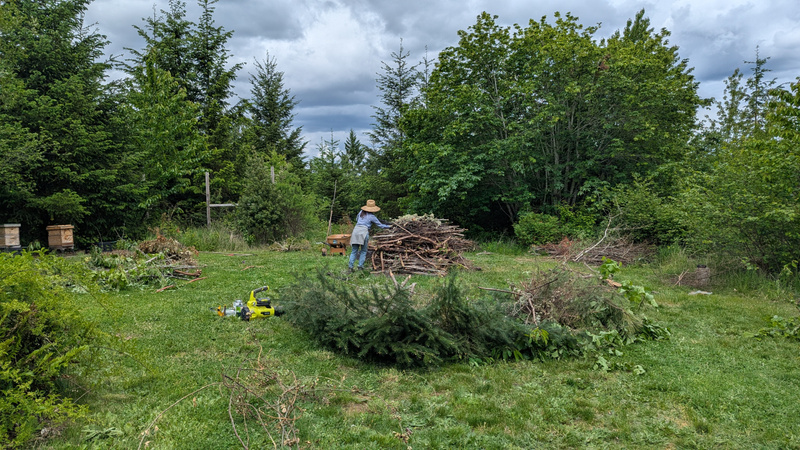
When we’ve got enough material, we build a central burn tower. The foundatien is made of thick, dry branches, and as we progress to the top, it is stacked with smaller branches. Each layer is stacked in alternating directions — like a giant jenga tower 1.5 to 2 meters tall.
This tower is just the ignition point — a starter core. We don’t use all our wood here; the rest will be fed into the fire once it’s burning hot. If we’re not ready to burn right away, we cover the stack with a tarp to keep it dry (and make sure to move the tarp well away before lighting up — embers will fly!).
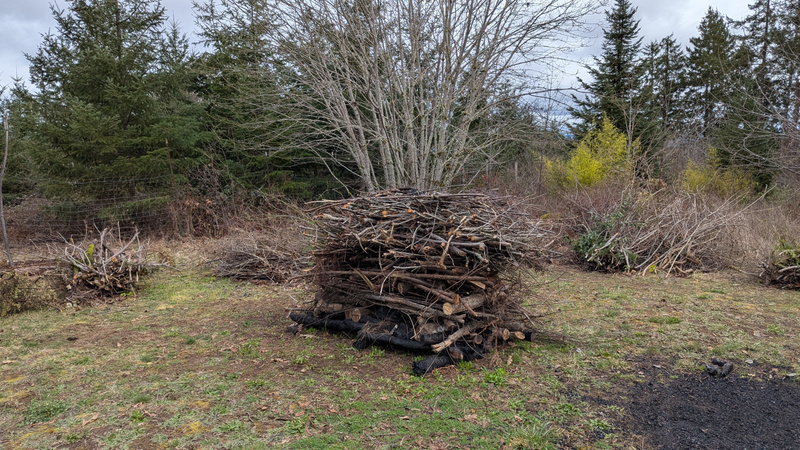
We always check local fire regulations before planning a burn. In our region, there are specific time windows when fires are allowed, and seasonal bans during summer months to prevent wildfires. We wait for a calm, low-wind day to keep everything safe and under control.
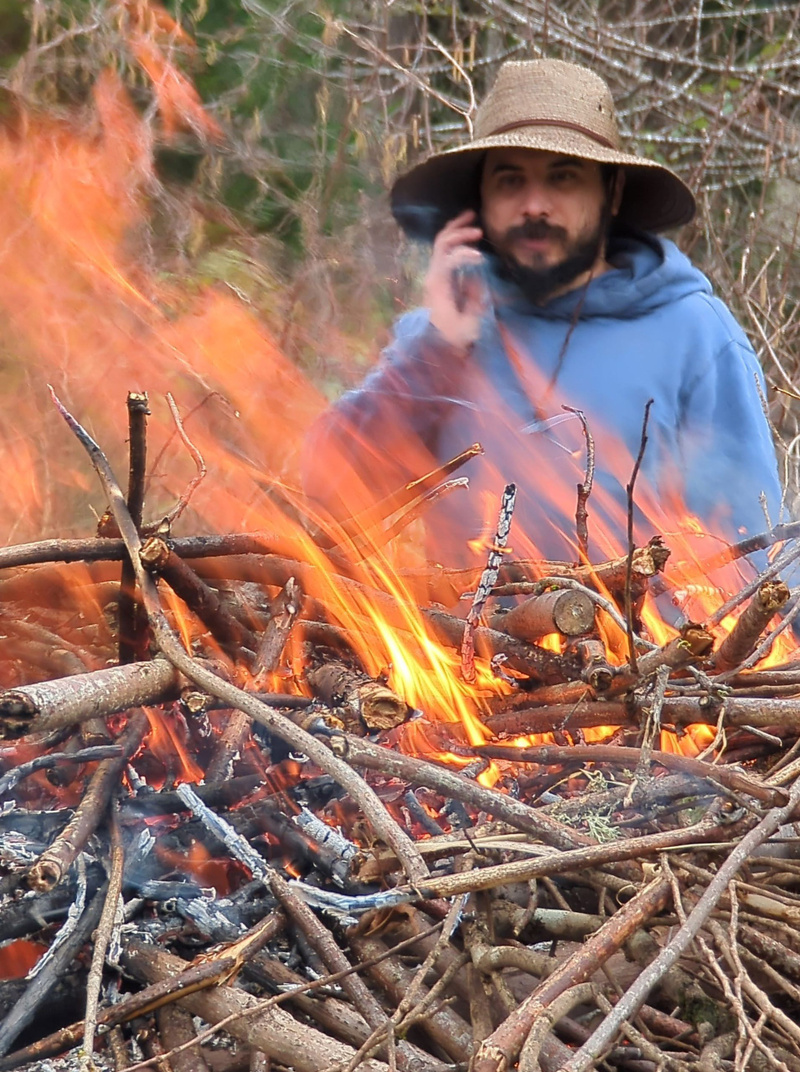
Starting the fire is still a bit of an experiment. So far, we’ve been lighting from the top down, letting the flame crawl downward — a method that works but often leaves the bottom branches unburned. A friend recently suggested starting from the bottom to get better coverage, and we plan to try that next season.
We use a propane torch to light the top branches, then kick things into gear with a battery-powered air blower. Once the flame takes, the fire moves quickly. There's not much standing around — it’s an active process of feeding, fueling, and managing the burn as it races through the wood.
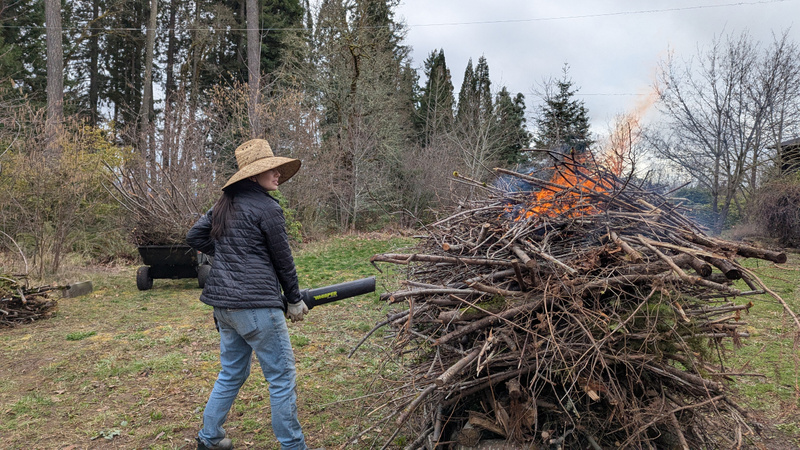
This is where the rhythm kicks in. We feed the fire in batches, keeping the burn hot and aerobic (to reduce smoke and promote clean char). The fire consumes material fast, so we have to stay on it — feeding branches, raking the pile, adjusting airflow.
We wear face covers, jeans, and old sweaters to protect against the intense heat and stray embers — trust us, you don’t want to wear anything you care about. Bits of ash burn holes straight through fabric. Safety first: we also make sure tools, water, and clear exits are ready in case conditions change.
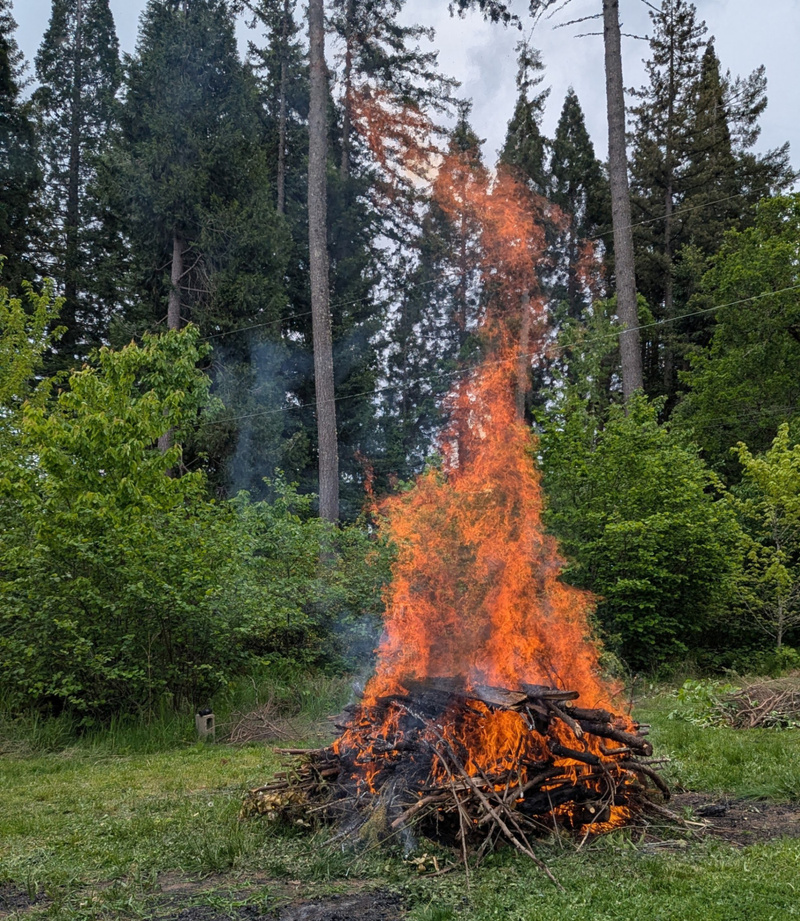
Once the fire burns down and we’re left with glowing embers and charred material, we spread the pieces and quench the pile with water, halting combustion and locking in the carbon. What’s left is rich black biochar, mostly in small, manageable chunks.
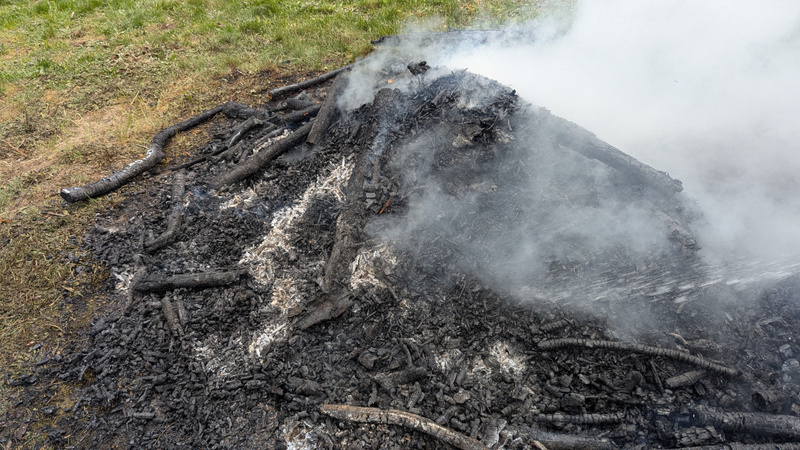
Some of the larger logs that only partially burned get set aside — we use them as the base for the next burn.
We’re planning to inoculate the biochar before use. Our upcoming experiment? Using biochar as a filter medium in our outdoor urinal system. The urine collects in buckets, and we’ll layer the char inside to reduce odors and charge it with nutrients — essentially creating a biochar-soaked fertilizer. After that, we’ll mix it into compost or directly into garden beds.
Raw biochar can pull nutrients from soil instead of giving — so this step is key. We're excited to see how it performs once it's part of our closed-loop system.
Each burn we do brings more learning, more respect for the elements, and more connection to this place. Fire, like soil, teaches us patience, timing, and humility. We look forward to sharing how the next batch of char shapes the season ahead.
IMPACTS